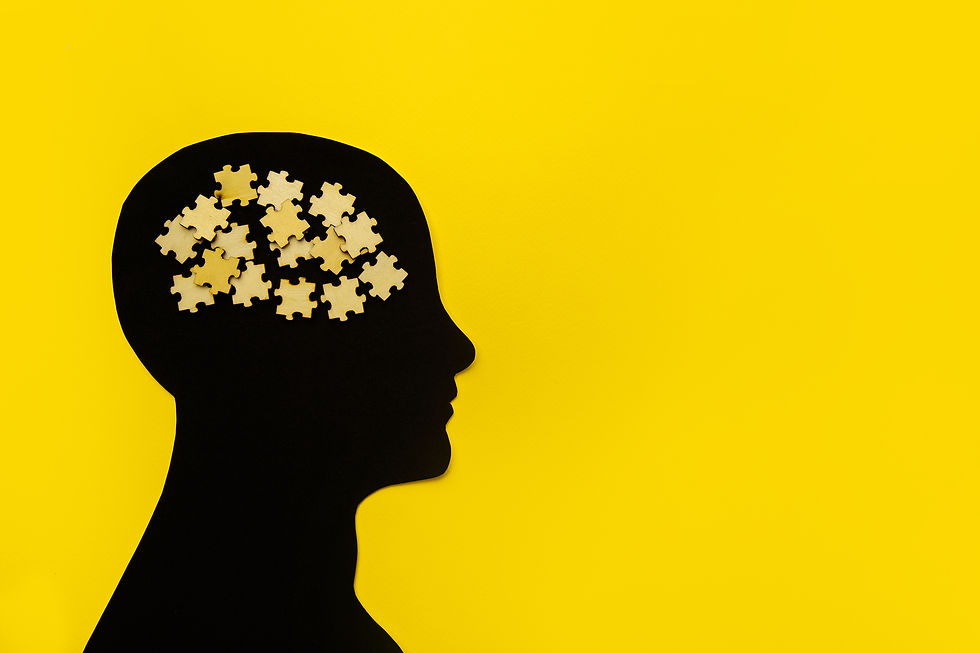The Disease
- Bill Ferrell

- Dec 18, 2022
- 3 min read
Updated: Dec 21, 2022
What is Early Onset Dementia? How is it Caused? What types of Early Onset Dementia are there?

Earlyonset dementia is used to describe any form of dementia that develops in people under the age of 65. Dementia has been diagnosed in people in their 50s, 40s and even in their 30s. The median life expectancy of an early onset dementia patient is 7 years.(from diagnosis)
According to The Mayo Clinic (link below)
Dementia is a term used to describe a group of symptoms affecting memory, thinking and social abilities severely enough to interfere with your daily life. It isn't a specific disease, but several diseases can cause dementia.
Though dementia generally involves memory loss, memory loss has different causes. Having memory loss alone doesn't mean you have dementia, although it's often one of the early signs of the condition.
Alzheimer's disease is the most common cause of a progressive dementia in older adults, but there are a number of other causes of dementia. Depending on the cause, some dementia symptoms might be reversible.
What causes dementia? Dementia is caused by damage to or loss of nerve cells and their connections in the brain. Depending on the area of the brain that's damaged, dementia can affect people differently and cause different symptoms. The most widely known form of early onset dementia is Early Onset Alzheimer's Disease. However there are a number of other forms. It is also possible to have a combination of these forms of dementia. Progressive dementias
Types of dementia that progress and aren't reversible include:
Alzheimer's disease. This is the most common cause of dementia. Although not all causes of Alzheimer's disease are known, experts do know that a small percentage are related to mutations of three genes, which can be passed down from parent to child. While several genes are probably involved in Alzheimer's disease, one important gene that increases risk is apolipoprotein E4 (APOE).
Alzheimer's disease patients have plaques and tangles in their brains. Plaques are clumps of a protein called beta-amyloid, and tangles are fibrous tangles made up of tau protein. It's thought that these clumps damage healthy neurons and the fibers connecting them.
Vascular dementia. This type of dementia is caused by damage to the vessels that supply blood to your brain. Blood vessel problems can cause strokes or affect the brain in other ways, such as by damaging the fibers in the white matter of the brain.
The most common signs of vascular dementia include difficulties with problem-solving, slowed thinking, and loss of focus and organization. These tend to be more noticeable than memory loss.
Lewy body dementia. Lewy bodies are abnormal balloon-like clumps of protein that have been found in the brains of people with Lewy body dementia, Alzheimer's disease and Parkinson's disease. This is one of the more common types of progressive dementia.
Common signs and symptoms include acting out one's dreams in sleep, seeing things that aren't there (visual hallucinations), and problems with focus and attention. Other signs include uncoordinated or slow movement, tremors, and rigidity (parkinsonism). Frontotemporal dementia. This is a group of diseases characterized by the breakdown of nerve cells and their connections in the frontal and temporal lobes of the brain. These are the areas generally associated with personality, behavior and language. Common symptoms affect behavior, personality, thinking, judgment, and language and movement. Mixed dementia. Autopsy studies of the brains of people 80 and older who had dementia indicate that many had a combination of several causes, such as Alzheimer's disease, vascular dementia and Lewy body dementia. Studies are ongoing to determine how having mixed dementia affects symptoms and treatments. Other disorders linked to dementia Huntington's disease. Caused by a genetic mutation, this disease causes certain nerve cells in your brain and spinal cord to waste away. Signs and symptoms, including a severe decline in thinking (cognitive) skills, usually appear around age 30 or 40. Traumatic brain injury (TBI). This condition is most often caused by repetitive head trauma. Boxers, football players or soldiers might develop TBI. Depending on the part of the brain that's injured, this condition can cause dementia signs and symptoms such as depression, explosiveness, memory loss and impaired speech. TBI may also cause parkinsonism. Symptoms might not appear until years after the trauma. Creutzfeldt-Jakob disease. This rare brain disorder usually occurs in people without known risk factors. This condition might be due to deposits of infectious proteins called prions. Signs and symptoms of this fatal condition usually appear after age 60. Creutzfeldt-Jakob disease usually has no known cause but can be inherited. It may also be caused by exposure to diseased brain or nervous system tissue, such as from a cornea transplant. Parkinson's disease. Many people with Parkinson's disease eventually develop dementia symptoms (Parkinson's disease dementia).



Комментарии